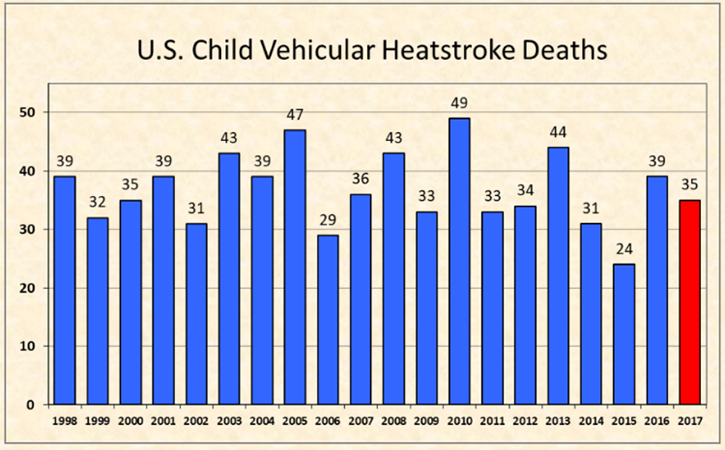Climate Control Systems for Public Safety in Smart Cars
By Sajida Imran, Department of Computer Engineering, Ajou University, Suwon, Republic of Korea, Ali Kashif Bashir, Department of Science and Technology, University of the Faroe Islands, Faroe Islands, Junaid Chaudhry, Security Research Institute, Edith Cowan University, Australia
IEEE Internet Initiative eNewsletter, September 2017
Discuss this topic on Collabratec:
The automobile industry has gained versatile technological advancements in recent years. Nowadays, vehicles are getting more sophisticated and technologically rich. Likewise, vehicles with a plethora of embedded and electronic devices are categorized as a Smart Cars[1]. The advanced communication and sensing technologies in smart cars like fortwo[2] and Tesla model X[3] provide ample knowledge of the inside and outside of the car’s environment to facilitate increased safety to drivers as well as to driverless cars. Nevertheless, in the presence of such advanced and smart cars, we do not yet have a system to detect and protect living beings (human, pets) from hyperthermia (heatstroke) and hypothermia in a stopped and enclosed car. As a result, several deaths and severe injuries of humans and pets in enclosed cars are observed every year[4,5]. For example, in the United States, since 1998, 735 child deaths were observed due to hyperthermia in enclosed cars[6].

Figure 1. Smart cars can provide a number of functionalities. [Source: Forrester Research, Inc.]

Figure 2. U.S. child deaths due to heatstroke since 1998[6]
One of the solutions could be a system to alarm and regulate the hazard that can help in eliminating or lowering the risks associated with aforementioned situations. Use of smart cars to build such a system is an ample solution. For instance, sensing, communication, and control system modules in smart cars can be leveraged to realize and build a smart climate control system. The integration of a climate control system into smart cars has a benefit of widespread adoption as smart cars are becoming accepted as general transportation means; 1) smart cars have the potential to provide real safety by reducing road accidents and 2) adopting smart cars will need very light weight changes in the road infrastructure. In order to bring a climate control system to reality, a number of factors need to be considered.
First, as hyperthermia and hypothermia are mostly observed in a stopped enclosed car, the safety system first detects and confirms the stoppage of the car. The system does not need to be functional in a moving vehicle. However, it is important to differentiate the occasional stoppage of the car for a very short duration. Therefore, the threshold is set on the observed amount of time the vehicle is stopped. One or multiple types of sensors are used to detect the car stoppage. Vibration sensors greatly help in determining the car’s rest state. Secondly, the presence of a living being in stopped vehicles needs to be determined. If a stopped car is empty, the climate control system does not need to be functional. For instance, motion, sound, and occupancy sensors are used to detect different states of a living being. For example, movements are observed through motion and occupancy sensor.
It is also important for the system to differentiate between inside and outside movement while making a decision on the presence of a living being. Once the presence is detected, the system starts observing the car’s inside environment[7]. The combination of temperature and humidity sensors are used to draw a conclusion on hazard levels[8]. Third, when the system detects a hazard, it performs a number of actions depending on the severity and level of the hazard. Severity of the environment is set based on expert recommendations made by medical professionals. Different actions like sending a warning message or a phone call on a registered phone, opening and closing of the car window, turning on the heating or cooling system of the car, honking the horn, and more are performed.
Once sensed, there is a need for a gateway device which collects sensor readings, performs inference-based decisions on the readings, and realizes actions accordingly. In this climate control system, Arduino-Mega/Raspberry-Pi acts as a gateway device. The climate control system is connected to the mobile device via Wi-Fi. The gateway sends a warning message to the mobile device when alarmed. It also sends messages to users inside the car through a client app installed on their smart phones or sends messages to the users outside of the car using the cloud. Once the system is up, the sensors starts sending data to the gateway over time.
Design components
The smart car’s climate control system is realized through a combination of different sensors, communication models, and the control system.
Sensors
Temperature and humidity sensors are used to sense the car environment by checking temperature and humidity levels. Similarly, sound sensors are used to detect living being presence inside a car. Motion and occupancy detection sensor detect the presence of a living being through movements made by humans or pets. Vibration sensors detect the stoppage of the car.
Control System
The control system determines the actions and decision making for the climate control system. Raspberry Pi and Arduino can adequately do this job[9]. Raspberry Pi is around 40 times faster than an Arduino in terms of clock speed and has more RAM than Arduino. Raspberry Pi has a Debian-based Linux operating system. It supports multitasking, two USB ports, and connecting wirelessly to the internet. Arduino, on the other hand, is better for UART based hardware projects. This simplicity allows it to work with just about any kind of sensor or chips. Arduino/Raspberry Pi also works as a gateway to send messages and phone calls on a registered number as well as perform actuations.
Communication model
Serial connectivity is used between a hardware platform like Arduino and the sensors for sensor readings collection. The car cabin is a small area, and it is easy to deploy the system even in wired mode. The system can easily avoid wireless signal interference and latency through wired media inside the car. Also, wired connections are preferred to control electrical and mechanical components of the car. To send alerts to the user’s registered mobile phone, wireless connectivity via Wi-Fi is used as most mobile devices have Wi-Fi switched on at all times.
The community gets the benefit of the climate control system to better protect their kids, elderly, disabled, and pets left in the car from environmental hazards. By availing the climate control system, people now have ease from the worry of their loved ones left in the enclosed cars. Additionally, the use of smart cars and the climate control system itself have technological as well as societal implications. Smart cars are less noisy and produce less pollution. Also, developing regulations like minimum crash safety standards can boost their adoption. However, some regulations like possession of a driving license will limit smart car users. In addition, in the case of accidents in driverless cars, who should be to blame is one of the issues that needs to be regulated.
For climate control systems, if a user experiences false positives or false negatives for one or multiple times, the trust level on the technology will lessen. Use of advanced sensing technology and efficient decision algorithms can improve the situation. Having discussed the usability and importance of the smart climate control systems in smart cars, we need to consider the argument discussed:[10] there must be a co-assisting system that does not let the care-giver system become the victim of self-denial of service or denial of service through an external entity.
References:
[1] https://www.smartusa.com
[2] https://www.tesla.com/ko_KR/modelx
[3] https://www.pcmag.com/encyclopedia/term/51503/smart-car
[4] H Minamisawa, M-LSmith, Bo K. Siesjö , "The effect of mild hyperthermia and hypothermia on brain damage following 5, 10, and 15 minutes of forebrain ischemia", Annals of Neurology, 1990.
[5] http://www.mhhe.com/biosci/ap/vander/student/olc/d-reading1.html
[6] http://noheatstroke.org/
[7] Galatsis, Kosmas, and W Wlodarski. "Car cabin air quality sensors and systems," in Encycl. Sens 8, 2006.
[8] Barradas, Victor L. "Air temperature, humidity and human comfort index of some city parks of Mexico City," Journal of Biometeorology, vol 35.1, 1991
[9] Johnston, Dustin, "Arduino and Raspberry Pi in a Laboratory Setting", physics capstone project report, 2017
[10] Chaudhry J.A., Park S. (2007) AHSEN – Autonomic Healing-Based Self-Management Engine for Network Management in Hybrid Networks. In: Cérin C., Li KC. (eds) Advances in Grid and Pervasive Computing. GPC 2007. Lecture Notes in Computer Science, vol 4459. Springer, Berlin, Heidelberg.
 Sajida Imran
Sajida Imran
Sajida Imran is currently enrolled as Ph.D. student at Department of Computer Engineering, Ajou University, Suwon. She spent one year as researcher at internet computing lab, Korea University. She also worked as teaching assistant in Ajou University. She has been in reviewing committee of few conferences and a journal of Soft Computing and Automation. Her research interests include wireless sensor networks, mobile networks, network routing, IoT, and wireless connectivity.
 Dr. Ali Kashif Bashir
Dr. Ali Kashif Bashir
Dr. Ali Kashif Bashir is an Associate Professor of Department of Science and Technology, University of the Faroe Islands, Faroe Islands, Denmark. In the past, he has held positions at Osaka University, Japan, Nara National College of Technology, Japan, National Fusion Research Institute, Korea, and Korea Electric Power Co. Ltd. He received his PhD in Computer Science from Korea University. He also is a research consultant on some international projects, a mentor for few bodies, an Editor of Journal of Computer Networks, IEEE Access, Science and Education Publishing. He has given many invited talks across the globe and has chaired conference sessions. He is a senior member of IEEE. He is serving as editor in chief of IEEE Internet Policy and IEEE Future Directions on Ethics and Policy in Technology Newsletters. His research interests include: cloud computing (NFV/SDN), network virtualization, IoT, network security, wireless networks, etc.
 Junaid Chaudhry
Junaid Chaudhry
Junaid has over 15 years of exciting experience in academia, industry, law- enforcement, and in corporate world in information and cyber security domain. After getting his PhD in Cyber Security from Ajou University, Junaid obtained training at Harvard Business School, University of Amsterdam, and Kaspersky Research Lab in cyber hunting and training. He is a Senior Member of IEEE, a Practicing Engineer, member of High Technology Crime Investigation Association (HTCIA), Australian Computing Society, Australian Information Security Association, and frequently volunteers in promotion of science through public speaking, conference organisation, and by editing the scientific journals i.e. IEEE Access, Computer and Security by Elsevier, IEEE Internet Policy and IEEE Future Directions, and board member of tech startups. Currently, he is conducting cutting edge research on cyber security vulnerabilities and their countermeasures in healthcare and public health sector at Security Research Institute (SRI), Edith Cowan University. He has authored three books and 50+ research papers. He received awards for his research achievements from Government of South Korea, Qatar, Pakistan and from Saudi Arabia. Junaid is believes in collaborative research and actively seeks opportunities to collaborate in developing solutions in cross disciplinary domains.
Editor:
 Syed Hassan Ahmed
Syed Hassan Ahmed
Syed Hassan Ahmed (S’13, M’17) completed his B.S in Computer Science from Kohat University of Science & Technology (KUST), Pakistan and Masters combined Ph.D. Degree from School of Computer Science and Engineering (SCSE), Kyungpook National University (KNU), Republic of Korea. In summer 2015, he was also a visiting researcher at the Georgia Institute of Technology, Atlanta, USA. Collectively, Dr. Hassan authored/co-authored over 90 International Journal articles, Conference Proceedings, Book Chapters, and 2 Springer brief books. From the year 2014 to 2016, he consequently won the Research Contribution awards by SCSE at KNU, Korea. In 2016, he also won the Qualcomm Innovation Award at KNU, Korea. His research interests include Sensor and Ad hoc Networks, Cyber-Physical Systems, Vehicular Communications and Future Internet.
Dr. Hassan has been a TPC Member or Reviewer in 50+ International Conferences and Workshops including IEEE Globecom, IEEE ICC, IEEE CCNC, IEEE ICNC, IEEE VTC, IEEE INFOCOM workshops, ACM CoNEXT, ACM RACS, ACM SAC, and many more. Furthermore, he has been reviewing papers for 30+ International Journals including IEEE Wireless Communications Magazine, IEEE Networks Magazine, IEEE Communications Magazine, IEEE Sensors Letters, IEEE Transactions on Industrial Informatics, IEEE Transactions on Vehicular Technologies, IEEE Transactions on Big Data, IEEE Transactions on Mobile Computing, IEEE Communication Letters, Elsevier Computer Communications, Computer Networks, and a lot of others.
Article Contributions Welcomed
If you wish to have an internet policy related article considered for publication, please contact the Managing Editor of Technology Policy and Ethics IEEE Future Directions Newsletter.
Past Issues
IEEE Internet Policy Newsletter Editorial Board
Dr. Ali Kashif Bashir, Interim Editor-in- Chief
Dr. Syed Hassan Ahmed
Dr. Mudassar Ahmad
Dr. Onur Alparslan
Dr. Muhammad Bilal
Dr. Syed Ahmad Chan Bukhari
Dr. Ankur Chattopadhyay
Dr. Junaid Chaudhry
Dr. Waleed Ejaz
Dr. Yasir Faheem
Dr. Prasun Ghosal
Dr. Tahir Hameed
Dr. Y. Sinan Hanay
Dr. Shagufta Henna
Dr. Fatima Hussain
Dr. Rasheed Hussain
Dr. Saman Iftikhar
Dr. Stephan Jones
Dr. Mohammad Saud Khan
Olga Kiconco
Dr. Jay Ramesh Merja
Dr. Mubashir Husain Rehmani
Dr. Hafiz Maher Ali Zeeshan
About: This newsletter features technical, policy, social, governmental, but not political commentary related to the internet. Its contents reflect the viewpoints of the authors and do not necessarily reflect the positions and views of IEEE. It is published by the IEEE Internet Initiative to enhance knowledge and promote discussion of the issues addressed.



